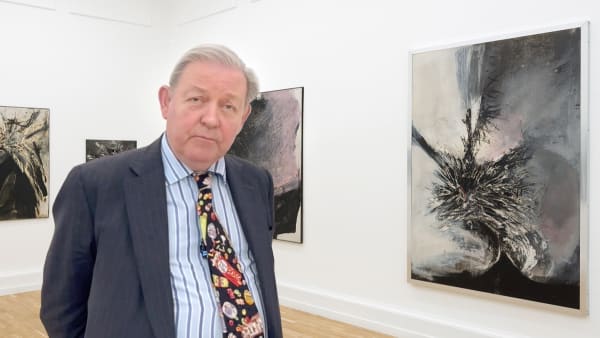Rafael Canogar: Imprints (Paintings 1958 - 1962)
-
 Rafael CanogarNudo, 1959Oil on canvas162 x 130 cm
Rafael CanogarNudo, 1959Oil on canvas162 x 130 cm
63 3/4 x 51 1/8 inches -
 Rafael CanogarPintura no. 28, 1959Oil on canvas195 x 130 cm
Rafael CanogarPintura no. 28, 1959Oil on canvas195 x 130 cm
76 3/4 x 51 1/8 inches -
 Rafael CanogarPintura no. 23, 1958Oil and acrylic on canvas162 x 130 cm
Rafael CanogarPintura no. 23, 1958Oil and acrylic on canvas162 x 130 cm
63 3/4 x 51 1/8 inches -
 Rafael CanogarUntitled, 1959Oil on canvas60 x 73 cm
Rafael CanogarUntitled, 1959Oil on canvas60 x 73 cm
23 5/8 x 28 3/4 inches -
 Rafael CanogarJaque, 1959Oil on canvas130 x 97 cm
Rafael CanogarJaque, 1959Oil on canvas130 x 97 cm
51 1/8 x 38 1/4 inches -
 Rafael CanogarPintura, 1959Oil on canvas60 x 73 cm
Rafael CanogarPintura, 1959Oil on canvas60 x 73 cm
23 5/8 x 28 3/4 inches -
 Rafael CanogarPintura no. 46, 1959Oil on canvas74 x 60 cm
Rafael CanogarPintura no. 46, 1959Oil on canvas74 x 60 cm
29 1/8 x 23 5/8 inches -
 Rafael CanogarSerie Negra no. 7, 1960Oil on canvas97 x 130 cm
Rafael CanogarSerie Negra no. 7, 1960Oil on canvas97 x 130 cm
38 1/4 x 51 1/8 inches -
 Rafael CanogarPintura, 1959Oil on canvas61 x 74 x 2 cm
Rafael CanogarPintura, 1959Oil on canvas61 x 74 x 2 cm
24 x 29 1/8 x 3/4 inches -
 Rafael CanogarEstandarte, 1962Oil on canvas150 x 200 cm
Rafael CanogarEstandarte, 1962Oil on canvas150 x 200 cm
59 x 78 3/4 inches -
 Rafael CanogarPintura no. 18, 1958Oil on canvas120 x 80 cm
Rafael CanogarPintura no. 18, 1958Oil on canvas120 x 80 cm
47 1/4 x 31 1/2 inches
‘We sought realities other than those harboured by everyday things. The very depths of being”
- Rafael Canogar
Rafael Canogar (b. 1935) is one of the leading Spanish artists of the post-war era. He first came to prominence in Madrid in the late-1950s as a founder member of the El Paso group amidst an era of conservatism, social conformity and oppression under General Franco. There, in conjunction with other young artists such as Manolo Millares, Antonio Saura, and Manuel Rivera, Canogar was responsible for creating a provocative and radically new, gestural language of abstract painting that gave fierce, visceral expression to a dynamic sense of energy and individual freedom. These were paintings that, like Wols in France, Emil Schumacher in Germany or Alberto Burri in Italy, immediately established Canogar as one of the foremost pioneers of ‘Informalist’ painting in Europe.
-

Walk-Around | Rafeal Canogar: Imprints (Paintings 1958-1962)
With James Mayor June 19, 2025In-depth tour of our exhibition Rafael Canogar: Imprints (Paintings 1958 - 1962) conducted by James Mayor. Watch NowRead more -

London Gallery Weekend
6 - 8 June May 28, 2025The Mayor Gallery is participating in London Gallery Weekend. Rafael Canogar: Imprints , will be open during the following extended hours: Friday, 10am – 6pm...Read more














